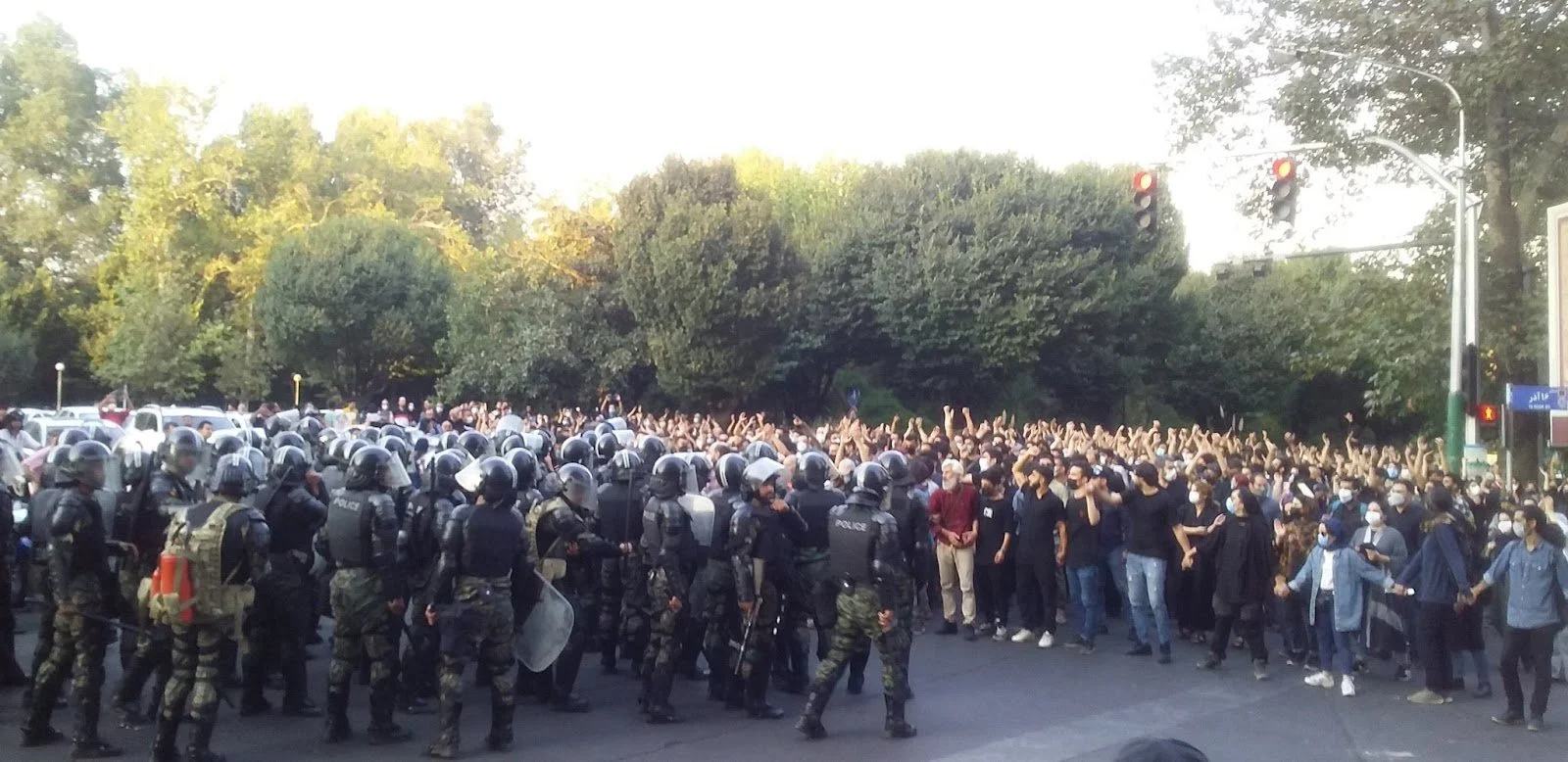Feminist Protests in Iran Ignite a Larger Movement Against the Regime
Iranians protest in the streets faced with security forces. Photo: Iran Human Rights
As demonstrations in Iran reach their fourth week, it is clear that this wave of unrest concerns more than just women’s rights.
Protesters are not just demanding reform in Iran, but outright regime change from the current theocratic leadership.
In the middle of September, the death of 22-year-old Mahsa Amini sparked outrage across Iran against the regime’s harsh restrictions on women’s freedom. Amini had been arrested and detained by the “morality police”, a state-sponsored force that enforces mandatory hijab.
It was later revealed that she had been killed while in their custody, igniting a movement across Iran to overthrow Supreme Leader Ayatollah Ali Khamenei.
Iranian security forces have launched a brutal and violent crackdown in response to the protests, resulting in 201 recorded deaths, including 23 children, according to the latest report of the Iran Human Rights Organization.
Witness testimony and video footage from protestors suggest that Iran’s Kurdish-majority regions in the northwest have experienced the most intense backlash from authorities. The human rights group Hengaw reported multiple strikes in regions including Saqez, where Amini was from.
What began as a feminist, women-led movement has grown to a collective expression of grievances with the Iranian government and its extremist ideology. Protest chants reflect a larger dissatisfaction with the current regime: “Death to the dictator” and “we don’t want an Islamic Republic.”
An increasing number of workers and professionals have voiced their solidarity, including Iran’s main medical association, which issued a statement signed by over 800 physicians.
Lawyers in Tehran also staged a peaceful protest in front of the Iran Central Bar Association while chanting the movement’s slogan, “Women, life, freedom”. The center’s executive director, Hadi Ghaemi, emphasized that “Lawyers willing to defend detainees arrested for peaceful protest are the last lifeline for a citizenry under attack by the Iranian government.”
Calls for Khamenei to step down are not new. In 2009, thousands of Iranians took to the streets in what became known as the “Green Movement” to demand political, social, and economic reform.
The current protests reflect deep disapproval of the regime’s extremist policies, restriction of freedoms, and mismanagement of the economy. Coupled with crippling Western sanctions over Tehran’s nuclear program, Iran’s economy has suffered greatly and its people have borne the brunt of these costs.
This past week, workers in Iran’s oil sector went on strike, imposing severe risks due to Iran’s dependence on this industry.
A young woman stands on a burning dumpster in Tehran. Photo: Middle East Images/Redux
The reaction from security forces has not deterred many Iranians that believe this movement poses a real threat to Khamanei’s rule.
Protests over the weekend took place in neighborhoods like Naziabad, Fallah, and Valiasr, once considered government strongholds around Tehran. These neighborhoods have historically produced members of Basiji, the state paramilitary group that made headlines in 2009 for the violent repression of demonstrations.
The progressive weakening of the security apparatus in Iran in the face of mass protest is increasingly apparent. According to an analyst for the Carnegie Endowment, “The question is whether the regime can crush these protests without further inflaming them and while keeping their security forces intact.”
Statements from Iranian protesters illustrate a sense of unity, renewed hope, and commitment to continue rejecting the legitimacy of the Khamenei government.
In a statement to CNN, one protester described, “We are protesting for freedom in Iran. For the prisoners and the condemned…Everyone wants this regime to go.” Iranians from all walks of life have expressed a similar sentiment.
A young female software engineer in Tehran conveyed, “If you asked me last year about the future, I would have been hopeless. But if you ask me now, I would say I was wrong.”
Even workers driving through cities filled with protesters in the streets honk their horns in solidarity with activists.
A teacher in Tehran described the feeling of collective struggle in Iran, “We are finding each other at the intersections of our oppressions. This is not intersectionality in theory but one in practice that we feel with our skin and bones.”


